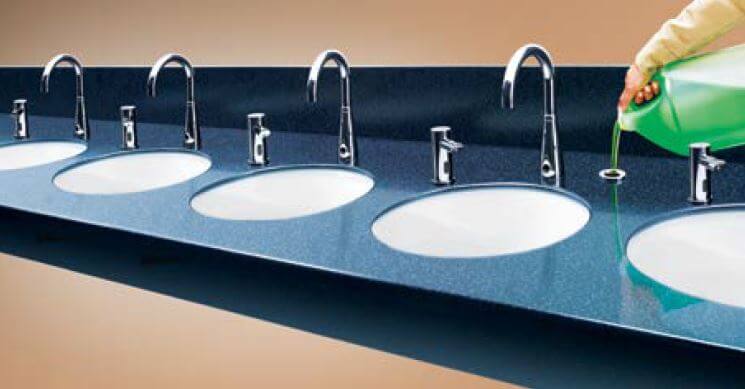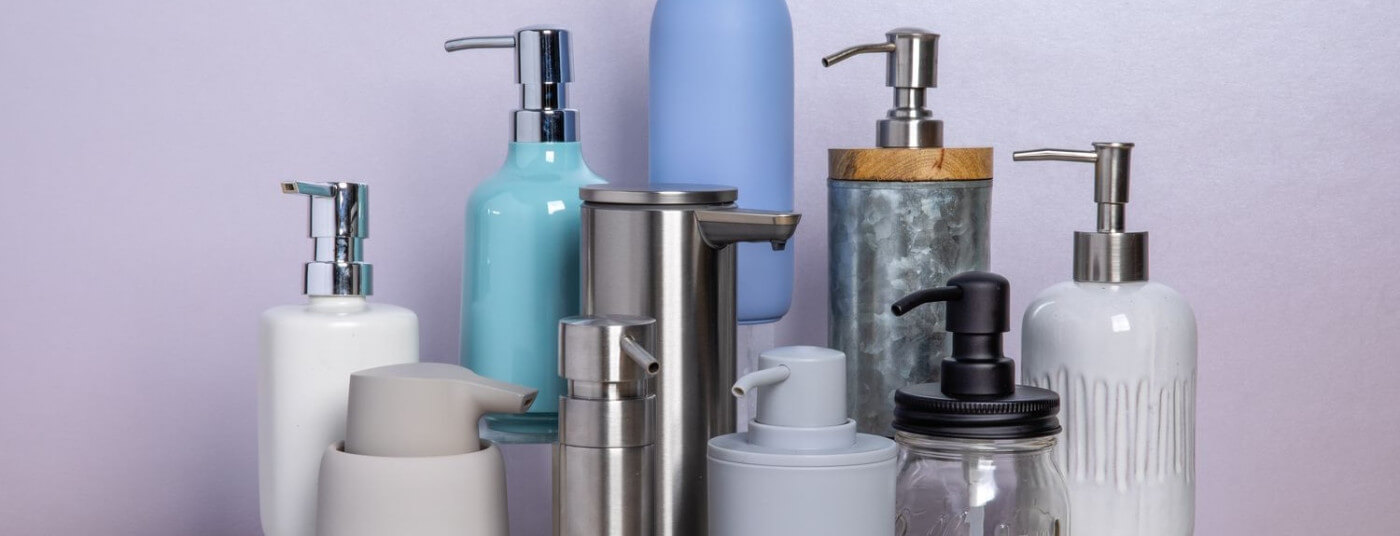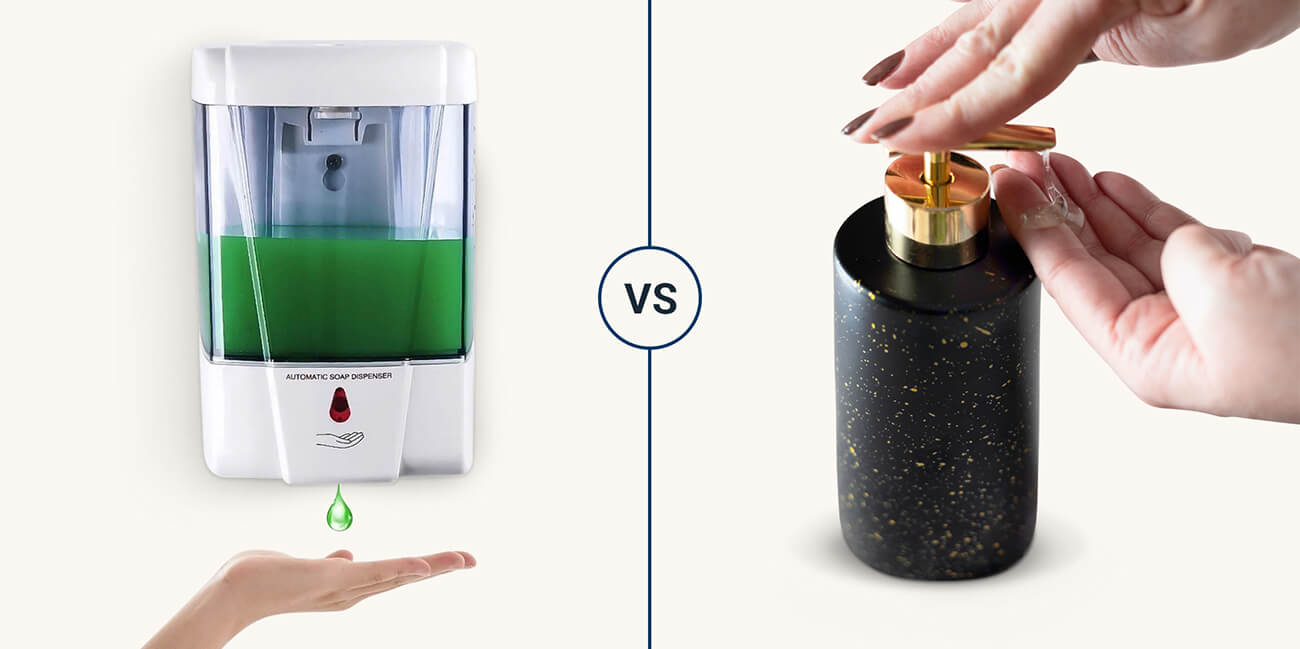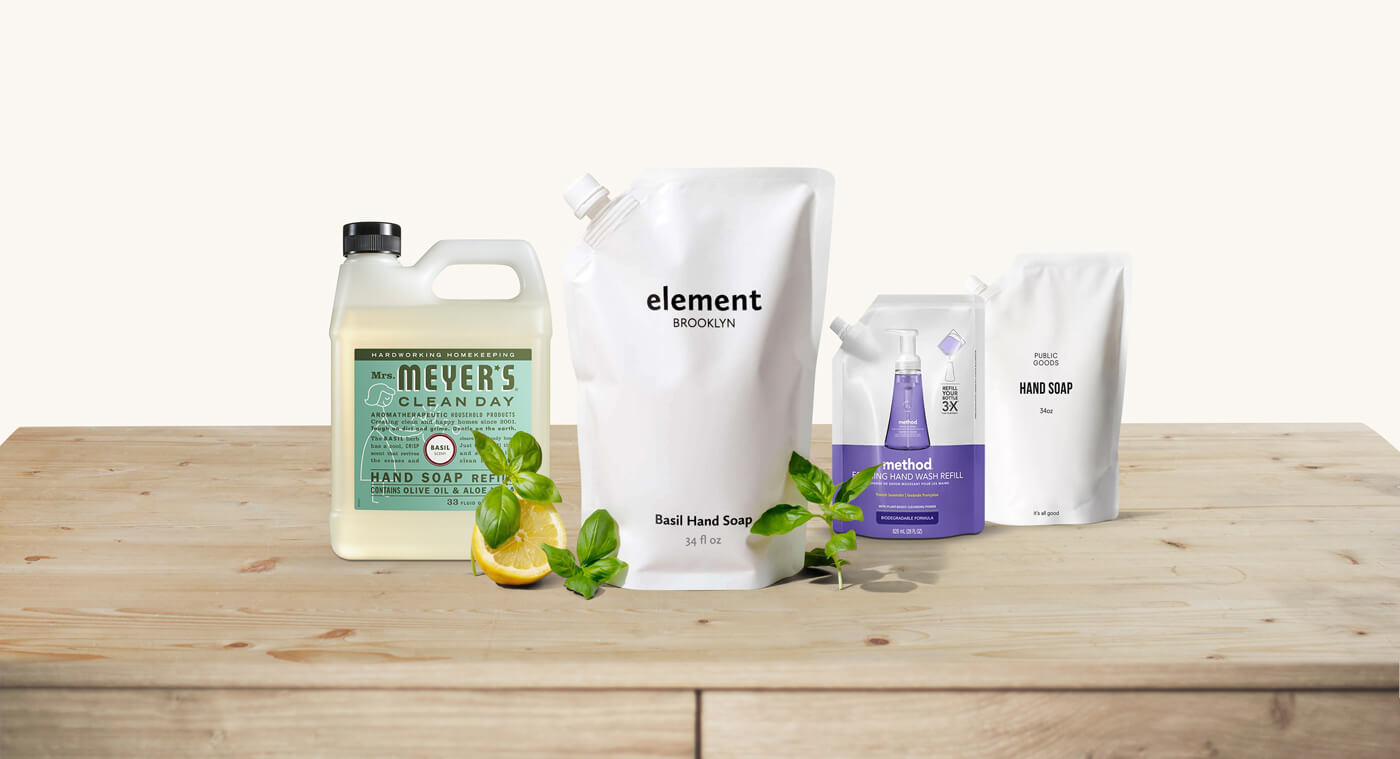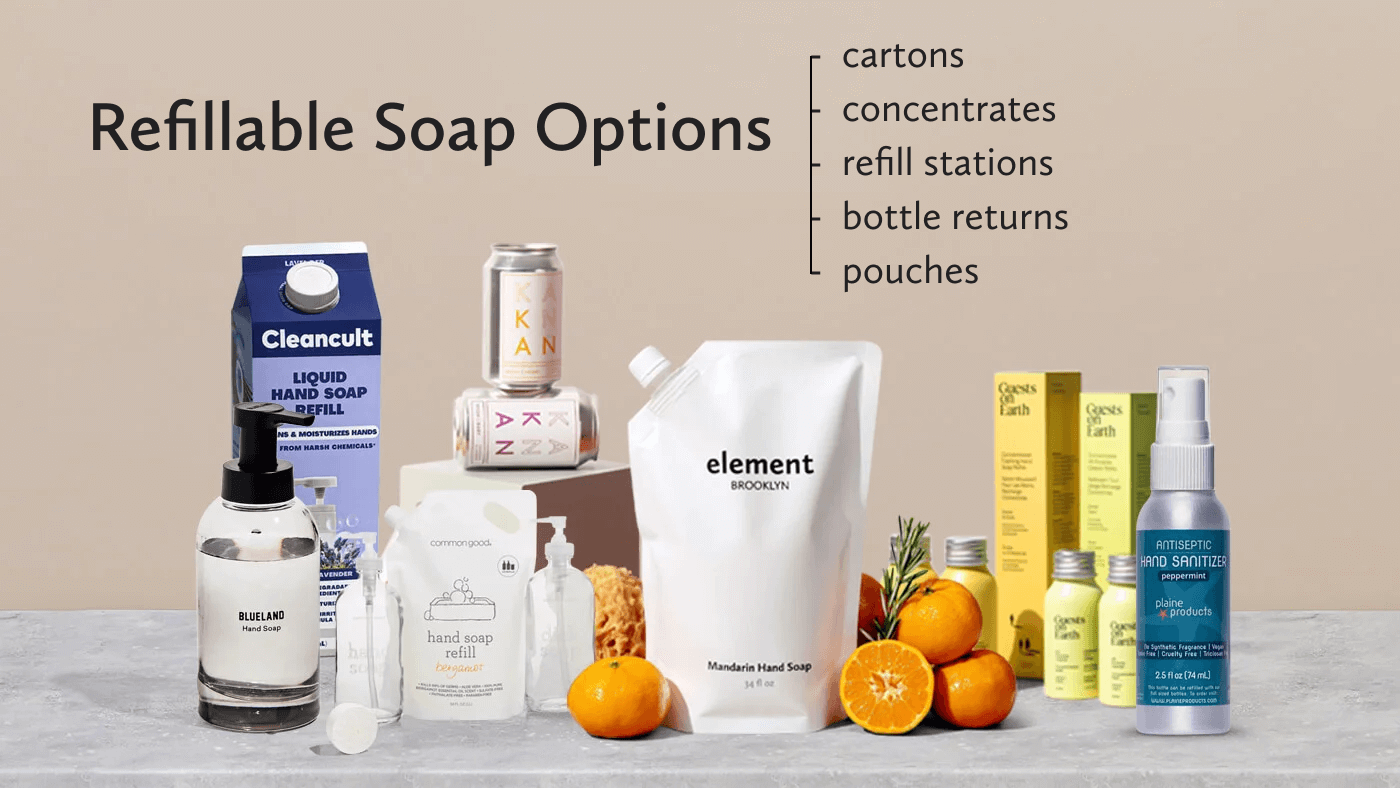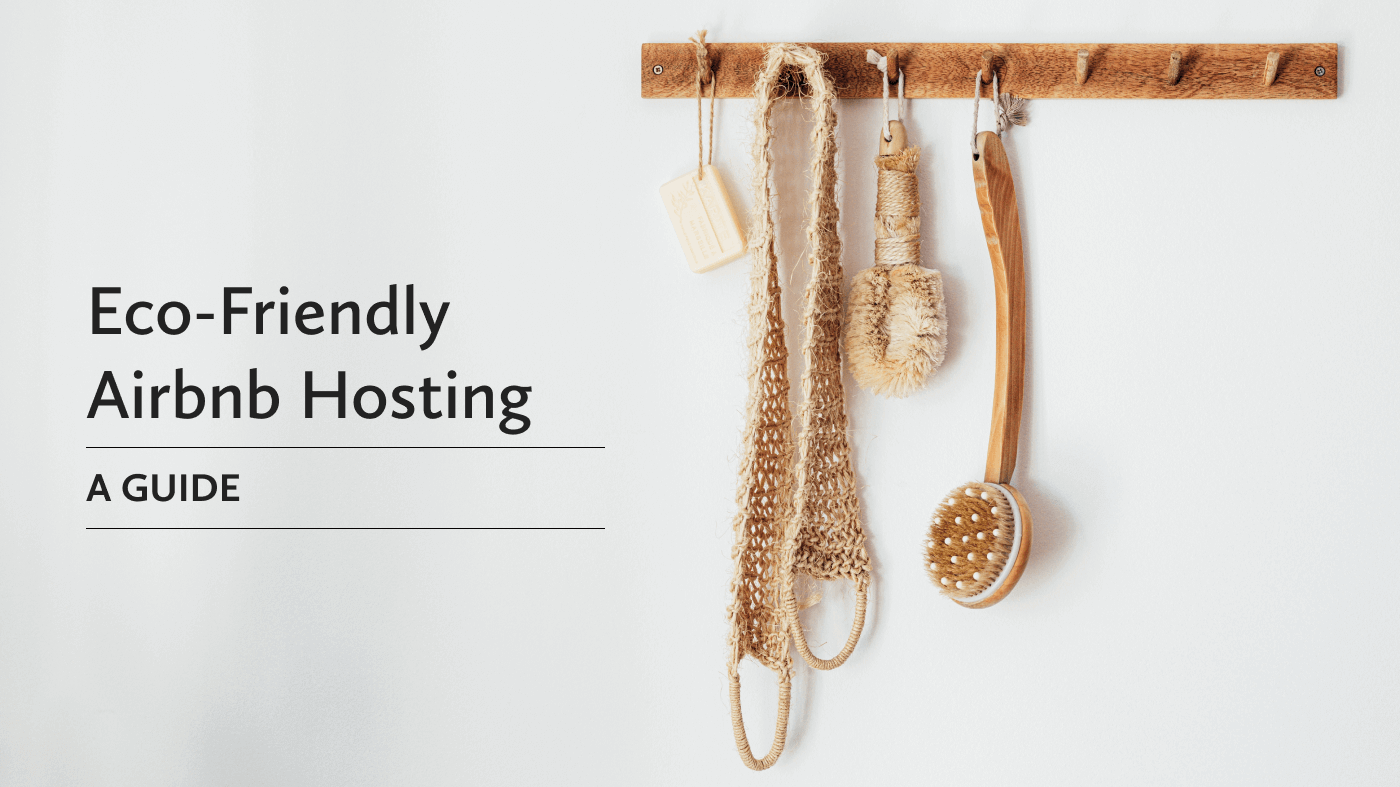When it comes to dining out, there are several factors that go into creating a positive restaurant experience that impresses patrons, such as delicious cuisine, top-notch service, and the unique ambiance and decor of the restaurant.
According to several recent surveys, following sustainable practices within the dining establishment is another important factor for consumers — whether that’s reducing food waste, using eco-friendly packaging, or installing energy-efficient appliances.
It’s no surprise that this extends to the restaurants’ restrooms, where high-efficiency hand dryers or low-flow sink faucets are becoming more common. In addition, utilizing refillable hand soap dispensers instead of individual soap bottles is another part of transitioning to a greener business model, while at the same time offering convenience and affordability.
There are several kinds of hand soap dispensers on the market that are ideal for restaurants, cafes, and bars. First, let's look at the three main dispenser types before diving into some different options to refill them.
Types of hand soap dispensers for restaurants
Under-the-Counter Mounts
This is one way an under-counter mount can be refilled. Photo: Restroom Direct
Counter-mount soap dispensers are fitted into the sink counter so that the dispensing unit is exposed, and the soap reservoir is hidden below. This type is often used in home kitchens and is less industrial-looking than a plastic wall mount (which we’ll discuss in a moment). Under-the-counter units require an opening in the counter to install, and typically refill with a standard liquid soap of your choice (although some systems use proprietary bottles from the manufacturer).
If you’re operating a smaller, mom-and-pop restaurant or take-out cafe, you might consider a small sized under-counter dispenser. These can be purchased from major hardware stores (like Lowes or Home Depot) and include a soap reservoir bottle that holds between 12 and 20 fluid ounces on average.
If your restaurant or tavern sees a higher volume of customers, a larger capacity reservoir (around 32 to 54 fluid ounces) could be a better choice. These commercial-style dispensers can be found at restaurant supply stores and are also available in touchless, automatic dispensing options or with foaming capabilities.
The one inconvenience of under-the-counter dispensers is having to crawl underneath to gain access to the soap reservoir (but some allow for top filling).
Wall Mounts
A typical wall-mounted soap dispenser. Photo: Wayfair
Made of plastic or stainless steel, wall-mounted dispensers can be found in automatic, manual, foaming, or liquid distribution methods. While under-counter mounts are more subtle and can complement modern bathroom decor, wall mounts are distinct and a bit bulky, with some style variations available.
When it’s time to replenish them, wall mounts have three main types of refill options: cartridges, bag-in-box, and liquid refills. Cartridges are rigid, plastic containers that have a square shape with a lower nozzle that fits vertically inside the wall mount.
Cartridges fall into two types: sealed and non-sealed, and although a sealed protection can help to prevent any pathogens or debris from entering, they usually require proprietary soaps from the wall mount manufacturer to ensure size compatibility. Both sealed bags and cartridges require a brand-new cartridge or bag replacement when the soap runs out (as opposed to refilling a reservoir with liquid soap, which non-sealed options provide).
Freestanding Dispensers
A selection of countertop soap dispensers, in a round-up by The Spruce
If finding the right look in your restaurant is a priority, freestanding refill dispensers (that sit on the counter or sink) will provide the most variety and styles, but they don’t usually have the same volume capacity as wall mounts or under-counter dispensers.
Since they tend to be smaller, refilling freestanding containers requires more frequent attention from restaurant staff. Refilling can be messy too, so if you’re considering this option, look for a freestanding dispenser with a wider opening to make the process go smoother.
Another benefit of freestanding dispensers is that you’re not limited to a handful of bulk commercial soaps. A wide range can be used, including local soap manufacturers, natural soap providers, or luxury brands.
Considerations for dispenser types
Automatic vs. Manual
Examples of automatic vs manual dispensers
There’s been an increased interest in automatic hand soap dispensers that use sensors to detect when to disperse the soap. By avoiding contact, these touchless systems have many hygienic benefits, but tend to be more costly than traditional manual (push button) types. Another drawback is that they often use batteries for a power source — adding yet another element that needs to be monitored and maintained to keep the dispenser working properly.
To Foam or Not to Foam?
Foaming vs non-foaming dispensers. Photos: Gadstyle, Cleancult
Some soaps are advertised as “foaming soaps” because of the lather created when washing your hands together — and some do contain more foaming agents than others. However, liquid soaps used in a dispenser will only be distributed in foam form if the unit is equipped with a specific air chamber designed for this purpose. Putting “foaming soap” in a non-foaming dispenser will disperse the soap in a liquid form only.
Using foam soap can be more cost effective in the long run (because it uses less liquid), but some studies show it may not be as effective as liquid soap in killing germs.
Sustainable soap refill options
Choosing a soap dispenser that can be refilled by a non-proprietary, liquid soap can help to reduce single-use plastic waste and can be cheaper than buying cartridges, bags, or other containers that can’t be refilled. Once you’ve decided on the type of dispenser you’re interested in, there are several options for ordering bulk soap refills for your restaurant.
Bulk Liquid Plastic Container Refills
Whispering Willow's wholesale 64 oz soap is available in scents including lavender, lemongrass and eucalyptus & mint. Photo: Whispering Willow
The most classic type of bulk soap refill is the large plastic bottle (usually sold in half gallons or gallon sizes) because they’re a familiar and economical refill solution. There are countless choices available, including soap made from natural ingredients like a 64-ounce refill bottle from Whispering Willow Soap, or a wholesale pack of four-gallon refills from Public Goods.
Wider pour spouts (that are similar to laundry soap bottles) can get a little tricky (and messy) when using these larger, heavier containers – especially when trying to refill a dispenser that’s high up and flush against a wall.
Concentrate Refills
Concentrated soap refills for individual, home use have an expansive range of choices (check out our post on some of the different types of kitchen or bath refills). However, there are fewer selections for bulk, commercial uses in restaurants and bars. This is likely because concentrates are less convenient and more labor intensive than other refills, so they’re not ideal for large-scale establishments.
Concentrated options include tablets, pods, aluminum vials, and bars, and could be a solution for cafes or restaurants that use smaller volume soap dispensers (like freestanding bottles that you find in the home). If you don’t mind the inconvenience of mixing, pouring, and frequent refills, they’re also an extremely affordable alternative.
Refill Pouches
Hand soap refill options. Photos: each manufacturer.
Refill pouches are a solid option for all three of the main types of refillable liquid soap dispensers because they’re soft sided and not as bulky or heavy as a gallon of soap. Plus, the smaller spout can easily be pointed right into the opening to avoid unnecessary spillage.
Although refill pouches can be difficult to recycle curbside (check with your municipal provider), they are accepted for recycling through Terracycle’s “Zero Waste Box Program.”
The sealed and bulk soap hand refills discussed earlier (in capsules and bags) are usually produced by major manufacturers and can have a sterile, “hospital soap” scent. In contrast, many refill pouches are made by smaller companies that use essential oils, leaving behind a fresh, pleasant aroma instead of a chemical after scent.
Element Brooklyn’s 34-fluid ounce soap pouches can refill smaller, freestanding containers at least two times and can also be used on wall mounts or under-the-counter dispensers (in both foaming and traditional liquid designs).
Finding the right refillable soap dispenser for your style of restaurant will depend on practicality, convenience, and personal preference. This simple switch from one-time-use soap bottles can contribute to more sustainable practices and are another way to retain repeat customers who recognize and appreciate eco-conscious initiatives.

